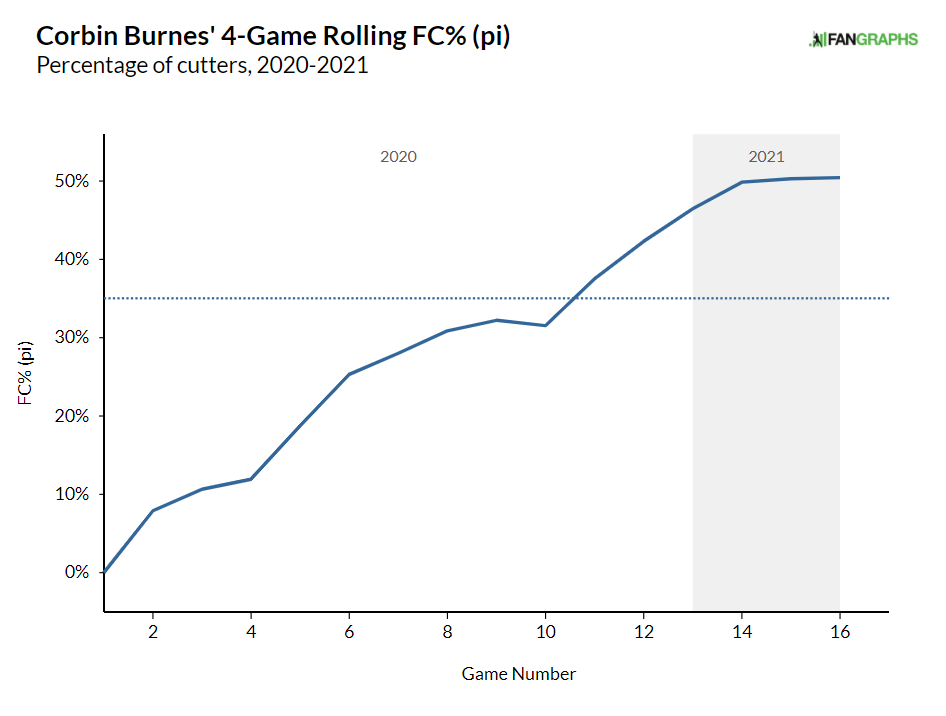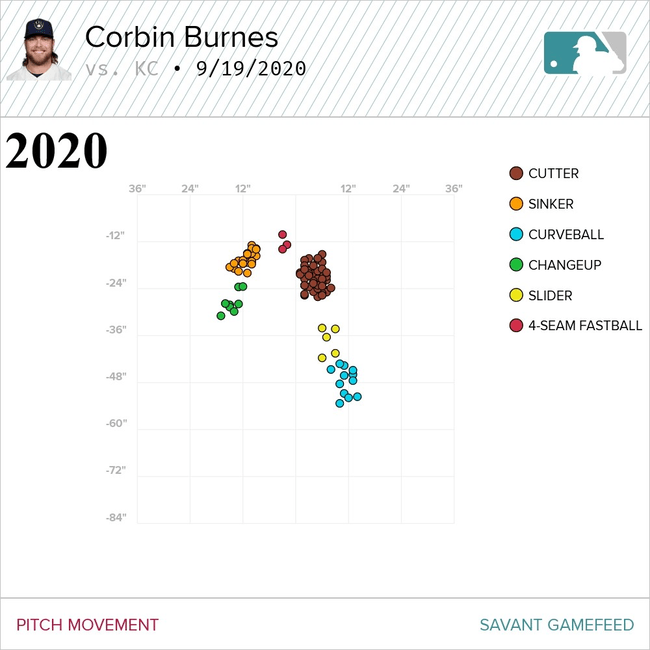It’s not all that easy to think of pitchers who were really, really bad one season, and then really, really good the next season. Lucas Giolito comes to mind, but he might be one of the only recent examples. Not that I count, anyhow. Of course, there is one other example. That pitcher is Corbin Burnes, who was one of the worst pitchers in baseball in 2019, and one of the best in 2020. He’s built on changes he made last year, and not only has he improved, but he’s been historic.
I don’t mean that hyperbolically. Burnes has kicked off the 2021 season at a pace that is quite literally unprecedented. Perhaps no statistic is more telling than the following tweet from one of the best at mining statistics, Sarah Langs:
Corbin Burnes is the 1st pitcher since at least 1901 with 9+ strikeouts and no walks in 4 straight appearances
— Sarah Langs (@SlangsOnSports) April 21, 2021
This…is wild! Do you know who hasn’t done this? Jacob deGrom hasn’t done this. deGrom is sitting 99 mph with his fastball with plus pitches in his slider and changeup — and plus command! — and yet Burnes is still outperforming him. At least for now. They’ve pitched just three and four games, respectively, but deGrom’s 1.34 FIP is bested by Burnes’ 0.71 FIP. Given Burnes’ command woes, it’s awfully impressive that he hasn’t surrendered a walk over four starts. But to add to it, he’s also posted 11, 9, 10, and 10-strikeout nights over his first four starts, and the only run he’s given up was a solo home run during his first start.
This is all because of three changes, the first of which is the only one I had anticipated at all coming into this season. That change is Burnes’ cutter usage:

Burnes started leaning on his cutter more and more towards the end of last season, a change in which I bought into, based on Eno Sarris’ mentioning of Burnes’ superior Command+ grade on his cutter as opposed to his other offerings. Burnes has continued to throw it at a higher clip than he did in late 2020. That’s good! There’s a strong correlation between his cutter usage and walk percentage, but you already know that his walk percentage has decreased to zero!
The continued (and increased) reliance on his cutter is one thing, but it’s certainly not the only thing. The pitch has changed, too. Here’s a cutter from 2020:
https://gfycat.com/oblongwearygoldeneye
And here’s a cutter from 2021:
https://gfycat.com/glamorouschiefgelada
Perhaps it’s not evident to the layperson, but those pitches are visibly different. Most obviously, his cutter in 2020 is 92 mph, which is around where he sat in 2020, whereas his 2021 cutter is up to 96 mph, where he’s sat this year. Due in part to this uptick in velocity, the shape of his cutter has changed considerably. I knew Burnes’ cutter was different, but I didn’t know exactly how much it had changed. Lance Brozdowski tipped me off to how unique it’s gotten:
Corbin Burnes added about 6" of vertical movement to his cutter this year compared to last.
That seems… important?
I think this is creeping into unicorn rising cutter territory. 🦄⚾️
— Lance Brozdowski (@LanceBroz) April 9, 2021
Burnes’ cutter is, indeed, a unicorn pitch. It doesn’t have as much ride as the cutter that Kenley Jansen was throwing years ago, but Burnes’ cutter gets more ride than any other cutter in baseball. Its shape isn’t dissimilar from the cutter that Jansen is throwing this year, but Burnes is throwing his five miles per hour harder and, perhaps most importantly, Burnes has four more pitches he can rely on.
The cutter gives hitters a hard enough look that he’s able to throw it a lot. That’s why Jansen used to throw his cutter upwards of 80% of the time, and why he still throws it more than 50% of the time. Burnes is right there with him now, as he’s bumped his cutter usage from 31.5% in 2020 to 50.4% in 2021. The uptick in cutter usage came almost exclusively at the expense of his sinker, which is noteworthy, because that means fewer balls in play, which allows for more strikeouts.
Now, all of his pitches are up about a tick, except for his cutter. His cutter has gained three miles per hour on average since 2020, but that appears to be a result of a slight tweak in his cutter grip — Brozdowski visualizes that with screenshots from 2020 and 2021, in which his middle and index fingers have more space between them. That gain in velocity and ride has allowed him to use his cutter upstairs more often this year, as opposed to last year, where he used it more like a slider and kept it lower in the zone.
That brings us to our final tweak, which you could maybe argue is more than one. Let’s take a look at Burnes’ repertoire in 2020 versus 2021:

Burnes’ pitch ecosystem has changed rather drastically, with his cutter getting significantly more ride and his curveball getting more drop. His slider no longer bleeds into curveball territory, and his cutter has gained even more distance from his slider. The result is three distinct pitches that Burnes throws to his glove-side, whereas last year it looked more like two. This gives hitters a 96 mph cutter with ride to look for, a slider at 86 mph that drops, and an 81 mph curveball that drops even more. That’s to say nothing of his sinker, which he throws at 97 mph, and his changeup, which he throws as often as his sinker. By pitch-type, Burnes has had five pitches for two years, but now he really has five pitches.
And so, the cutter is the obvious driver behind all of this, but it feels reasonable to suggest that his cutter and other offerings can act symbiotically. Burnes probably won’t maintain a 40% CSW with his cutter, but he may be able to hold some of the improvements from his 34.3% CSW in 2020, as well as hold the CSW gains with his other pitches.
Even as someone who remained hopeful for Burnes after his 2019, it wasn’t easy to envision his 2020 happening, and it was even more difficult to think that he could do this in 2021. The beauty of pitchers is that there’s always a tweak. Tyler Mahle had the command, and now he has the fastball. Shane Bieber had the command, too, but now he’s put it together with his secondary offerings. Joe Musgrove had the repertoire, and now he has the velocity and optimal pitch mix. It may be too early to call Corbin Burnes an ace, but he looks like an ace, and he pitches like an ace. With this shiny new cutter, perhaps he’s reached ace-dom.
Photo by Lawrence Iles/Icon Sportswire | Design by J.R. Caines (@JRCainesDesign on Twitter and @caines_design on Instagram)

